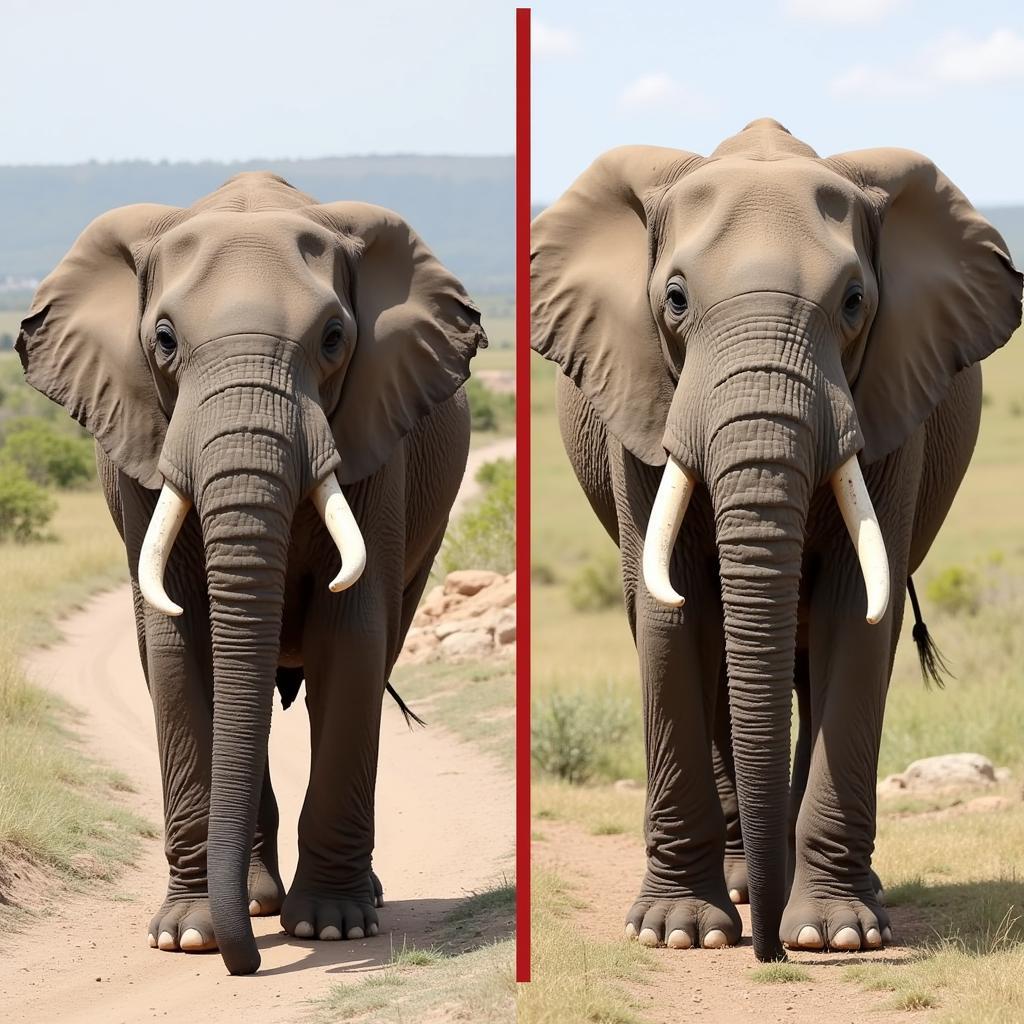Understanding African Elephant Tusk Size
African elephant tusks, those magnificent ivory protrusions, are a source of both awe and controversy. These impressive structures, essentially elongated incisor teeth, are more than just striking features. They play a crucial role in the lives of these majestic animals. One of the most common questions people ask is, “How big do African elephant tusks get?” The answer, like much about these complex creatures, is multifaceted.
 African Elephant Tusks Size Comparison
African Elephant Tusks Size Comparison
Factors Influencing Tusk Size
Several factors contribute to the size of an African elephant’s tusks. These include:
- Genetics: Just like humans, elephants inherit traits from their parents. Some elephant populations are genetically predisposed to having larger tusks than others.
- Gender: Male African elephants generally possess larger tusks than females. This difference is linked to their social structure, where males use their tusks for competition over mates and territory.
- Age: As elephants age, their tusks continue to grow throughout their lifetime. Therefore, older elephants often have more massive tusks, providing a visual cue to their experience and dominance within the herd.
- Environment and Diet: The availability of food and minerals in an elephant’s environment can impact tusk growth. Regions rich in calcium and phosphorus contribute to stronger, larger tusks.
The Range of African Elephant Tusk Size
While there’s no one-size-fits-all answer, an average adult male African elephant can have tusks that reach up to 6 feet in length and weigh between 50 to 100 pounds each. That’s longer than the average human is tall! However, it’s essential to remember that these are just averages.
Record-Breaking Tusks
History boasts some truly colossal African elephant tusks. The largest tusks ever recorded belonged to an elephant bull shot in 1900 near Kilimanjaro. These incredible ivory appendages measured an astounding 11.5 feet long and weighed a combined total of 440 pounds. Sadly, this record is a stark reminder of the devastating impact of ivory poaching, which often targets elephants with the largest tusks, impacting the gene pool and future generations.
The Importance of Tusks
Tusks aren’t just for show. They are vital tools that elephants rely on for survival. African elephants use their tusks for a variety of purposes, including:
- Digging: Elephants use their tusks to unearth water sources, excavate for essential minerals in the soil, and even to access roots and tubers for food.
- Stripping Bark: The bark of certain trees is a crucial part of an elephant’s diet, and their tusks act like giant can openers, allowing them to strip bark effortlessly.
- Defense: When faced with threats, elephants use their tusks to defend themselves and their young from predators like lions and hyenas.
- Social Interactions: Male elephants often engage in tusk-to-tusk combat to establish dominance, particularly during mating season.
The Threat of Poaching
The immense size and beauty of African elephant tusks, unfortunately, have made them a highly sought-after commodity in the illegal ivory trade. This relentless poaching has had a devastating impact on elephant populations, leading to a decline in the average tusk size in some areas.
Conservation Efforts
The future of African elephants, and their magnificent tusks, depends on global conservation efforts. Stricter anti-poaching measures, habitat protection, and educating communities about the importance of elephant conservation are all vital steps in ensuring these majestic creatures continue to roam the African landscape for generations to come.
Understanding the factors that influence African Elephant Tusk Size, their importance to elephant survival, and the ongoing threats they face is crucial in raising awareness and promoting the protection of these magnificent animals.


